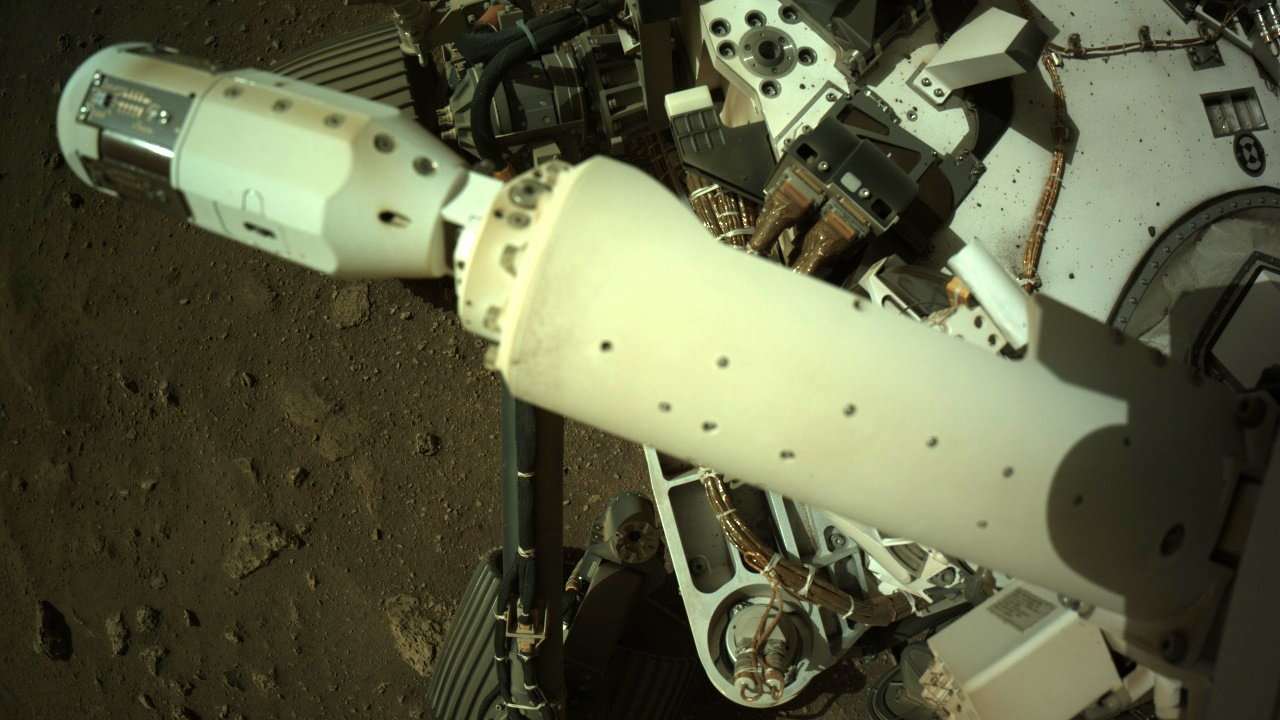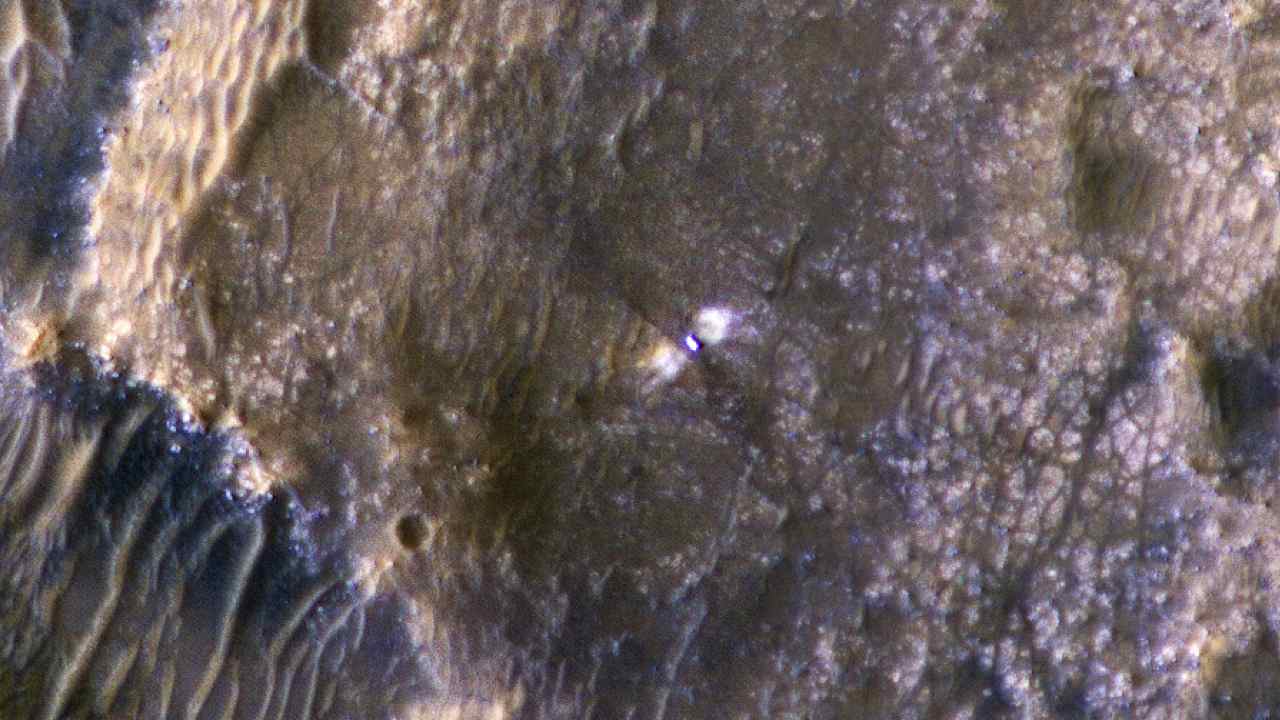tech2 News StaffMar 04, 2021 13:59:12 IST
A fortnight since its widely-documented touch down on Mars, NASA’s Perseverance rover continues to find its bearings and stretch its numerous ‘arms’ on the Red Planet. Since the 18 February landing, the rover team has been performing a methodical battery of tests on its seven science instruments, and begun deploying the ones that work. In the latest deployment, Perseverance deployed its wind sensor, as seen in photographs captured by the navigation cameras on board.

The Perseverance rover’s navigation cameras show the wind sensor deployed. Image Credit: NASA/JPL-Caltech
The wind sensor is one of the instruments part of a weather monitoring experiment on the rover called the Mars Environmental Dynamics Analyzer (MEDA). The sensor collects data on air temperature, humidity, radiation, dust and wind around the rover, which is currently parked in its landing site – the Jezero Crater, a 45-km-wide depression in the ground that is thought to have once been home to an ancient lake and river delta.
Congrats to the MEDA team! Look what just deployed!! The wind sensor! @estrellasycafe You must be so stoked! Find more photos at: https://t.co/MTE3cqSBDd #mars2020 pic.twitter.com/FiGbSTvqYn
— Dr. Moogega (무지개) Cooper (@moogega) March 1, 2021
The High Resolution Imaging Experiment (HiRISE) on NASA’s Mars Reconnaissance Orbiter, spotted Perseverance at its landing site, six days after touchdown and in the process of system checks.

Perseverance rover and the Jezero Crater around it, as seen by HiRISE on 24 February. Image Credit: HiRISE: Beautiful Mars/Twitter
From the orbiter’s vantage point over 250 kilometres away in orbit, the ground below Percy’s wheels appears to be loose, dark material, with brighter material underneath. The bright zones are visible on either side of the rover, likely “scoured clear by the descent stage rockets” during descent, as per a statement on the HiRISE website.
In late February, ESA’s Trace Gas Orbiter shared another wide view of the rover and components after its descent, littering the surface of the Red Planet. The Perseverance rover is visible in images as a relatively faint spot next to a ridge connecting to one of the smaller craters in the vicinity.
Ingenuity: Perseverance rover’s first ‘big job’
Perseverance’s first big job will be to find an airfield where its little helicopter buddy can take off, according to a Space.com report. Mission controllers received the first status report from the Ingenuity Mars Helicopter attached to the belly of the rover, hours after its landing. Ingenuity will remain attached to the rover for the next several weeks, NASA had said in a statement at the time. Provided Ingenuity survives the frigid Martian nights to come, where temperatures dip to lows of minus 90 degrees Celsius, the mission team will proceed with the first flight of an aircraft on another world.
If Ingenuity manages to land successfully and remain operable, NASA may send four successors, “each building on the success of the last”, the agency said. These descendants of the Ingenuity rotorcraft can bring an aerial dimension to exploration of Mars.
Also read: ESA’s Trace Gas Orbiter, NASA’s HiRISE catch stunning glimpses of Perseverance rover on Mars
NASA shares video, audio of Perseverance Mars landing
Ingenuity helicopter reports in
Post a Comment